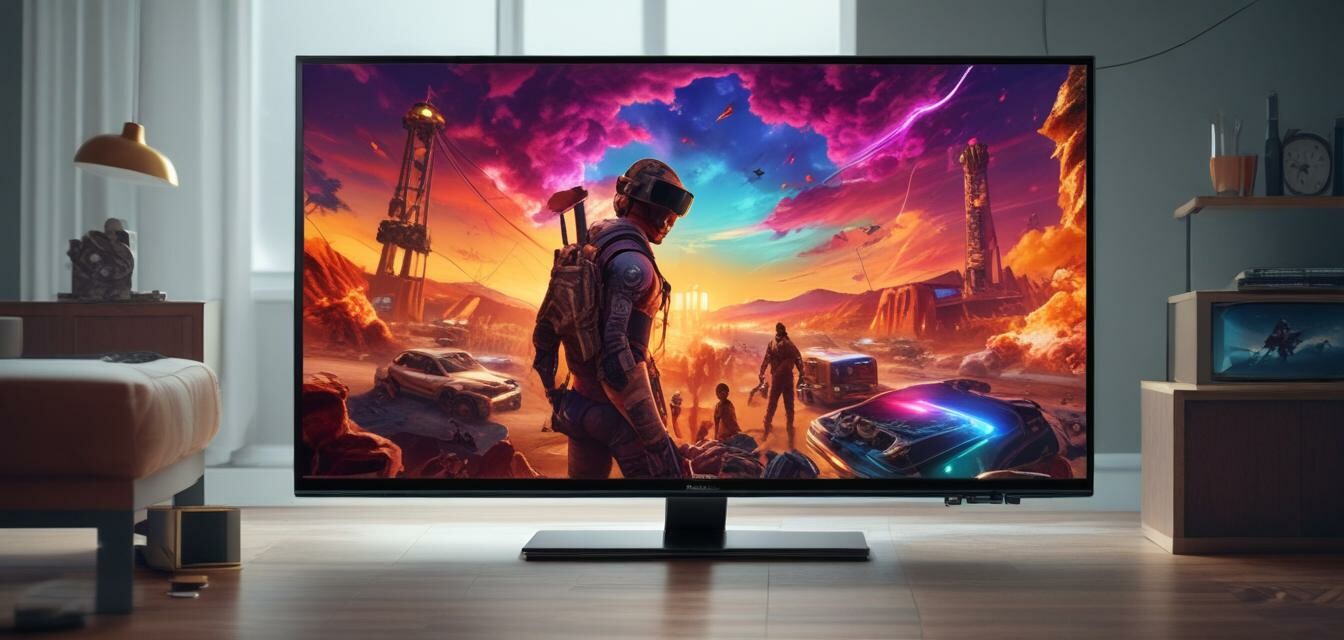
The impact of variable refresh rate (VRR) on gaming TVs
Key Takeaways
- VRR significantly reduces screen tearing and stuttering in gameplay.
- Many new gaming TVs support VRR for enhanced gaming experiences.
- Understanding VRR can help gamers choose the right TV for their setup.
- Comfortable gameplay is promoted through improved graphics and smoother motion.
- It's essential to stay updated on trends like VRR to enhance your gaming experience.
As gamers look for the best visual experiences, technology continuously evolves to offer enhancements that transform gaming. One of the most notable features in modern gaming TVs is Variable Refresh Rate (VRR), a technology designed to synchronize the refresh rate of the television with the frame rate of the console or PC. This feature has become essential for serious gamers aiming for competitive advantages. This article delves into how VRR technology benefits gamers and lists the important models that support this feature.
What is Variable Refresh Rate (VRR)?
Variable Refresh Rate (VRR) is a technology that allows a TV to adjust its refresh rate in real-time to match the frame rate output of a compatible gaming console or PC. This ability enhances the overall gaming experience in several ways, primarily by eliminating screen tearing and reducing stuttering.
Benefits of VRR in Gaming
- Eliminates Screen Tearing: Screen tearing occurs when the frame rate of the game does not synchronize with the refresh rate of the TV. VRR eliminates this issue by adjusting the display’s refresh rate to match the game’s frame output.
- Reduces Input Lag: With VRR technology, the lag between pressing a button and the on-screen action is minimized, ensuring that responses to player inputs are immediate.
- Smoother Motion: VRR provides a smoother gaming experience by displaying frames consistently, resulting in improved visual fluidity.
- Enhances Gameplay Experience: By reducing disruptions in gameplay, VRR allows gamers to immerse themselves in their gaming worlds better.
How VRR Works
VRR operates by establishing a dynamic connection between the graphics output and the TV's display capabilities. Below is a simple diagram illustrating the relationship:
| Component | Function |
|---|---|
| Gaming Console/PC | Outputs frames at varying rates based on the game's complexity. |
| Variable Refresh Rate (VRR) | Adjusts the TV's refresh rate to match the output frame rate. |
| TV | Displays frames without tearing or stuttering. |
Popular VRR Standards
Several VRR standards exist that enhance gaming TVs:
- AMD FreeSync: Designed for AMD graphics cards, FreeSync helps synchronize the monitor's refresh rate to the output of the GPU.
- NVIDIA G-SYNC: A competing standard, G-SYNC aims to provide a similar experience for those using NVIDIA graphics cards.
- HDMI VRR: An integral part of the HDMI 2.1 specification, enabling VRR across various devices.
- VESA Adaptive-Sync: A technology similar to FreeSync, it functions primarily for PC displays, ensuring smoother frame rendering.
Compatibility of VRR with Gaming Consoles
Understanding which models support VRR is essential for gamers aiming to enhance their setup. Notably, major gaming consoles now include VRR capabilities:
- PlayStation 5 - Supports VRR with compatible TVs.
- Xbox Series X|S - Built specifically to work with VRR technologies.
- Gaming PCs - Most modern GPUs from NVIDIA and AMD support VRR standards.
Choosing the Right Gaming TV with VRR
When selecting a gaming television with VRR, consider the following features:
- Refresh Rate: Look for panels offering at least 120Hz refresh rates for smooth gameplay.
- HDMI 2.1 Ports: Ensure the TV has HDMI 2.1 ports to support higher bandwidth and VRR functionalities.
- Panel Type: OLED and QLED TVs often provide the best visuals and refresh rates suitable for gaming.
- Input Lag: Check reviews for low latency ratings to ensure fast responses during gameplay.
Current Trends in Gaming TVs
Staying updated on the latest trends can help you make informed purchases. Key trends impacting gaming TVs include:
- Increased adoption of VRR across various brands.
- Growing prominence of 8K televisions that further enhance graphics.
- Enhancements in HDR technology, providing better color and contrast.
Conclusion
Variable Refresh Rate technology is changing the landscape of gaming televisions. Its ability to synchronize frame rates and enhance gameplay has made it a must-have feature for gamers. Whether you’re a casual gamer or a professional, understanding and utilizing VRR can drastically improve your gaming experience. Be sure to stay informed on the latest trends and consider VRR-enabled models for your next TV purchase.
Pros
- Smooth gameplay without screen tearing.
- Improved image stability and fluidity.
- Enhanced immersion in gaming experiences.
Cons
- Not all TVs support VRR features.
- Potential compatibility issues with older consoles.
Further Reading
If you’re interested in more about gaming televisions, check out some of our other articles:
